When it comes to negotiating ambulatory surgery center (ASC) payer contract rates, ASC leaders have a powerful new tool at their disposal: pricing transparency data. At a time when ASC operational costs (e.g., staffing, drugs, supplies, implants) are increasing—a reality that has largely been ignored by payers—access to this data gives ASCs a clear opportunity to support their business case and, in many cases, compelling logic for why their organizations should receive rate increases.
But having access to data and being able to use it are two different things.
How Price Transparency Affects Hospitals and ASCs
Hospital price transparency data presents the ASC industry with a clear understanding of market costs, which up until now, were widely known but difficult to quantify. Access to pricing information offers a clearer lens into the historically opaque world of healthcare pricing, along with the ability to redefine the role ASCs’ play in the broader delivery system by clearly communicating their cost-saving abilities to payers.
A federal mandate requiring hospitals to publicly disclose negotiated rates and standard charges on their websites went into effect in 2021. The sharing of this data, though imperfect, has sparked a new level of visibility into what care actually costs across different service areas and has given providers experiencing below-market reimbursement a stronger negotiating position. Historically, ASCs have often been reimbursed at significantly lower rates than their hospital counterparts for delivering the same procedures with equal or even better outcomes. Pricing data exposes the variations and quantifies the disparity.
Since the initial CMS requirement for posting charge data was implemented, data requirements have become clearer and more robust. While the initial rule required only a list of the hospital’s standard charges by procedure code in a machine-readable file, the most recent requirements stipulate that an estimated allowed amount and information about negotiated amounts by payer and plan name must also be included. This granularity of pricing data at the procedure code level gives all providers a window into their competitors’ reimbursement rates.
Since 2021, CMS has been monitoring and addressing noncompliance by sending warning notices and requesting a corrective action plan. CMS has the authority to both impose a civil monetary penalty and publicize this penalty on the CMS website for the public to see. Noncompliance with the federal rules can create public pressure from news outlets and patients that upset the delicate public relations balance between hospitals, consumers, and the media.
Price transparency serves to validate what ASC operators have long known—that there remains a wide disparity in reimbursements for the same service between the HOPD and ASC settings.
- For payers and employers, who are under increasing pressure to rein in healthcare spending, this data provides the empirical foundation needed to support a shift toward site-of-service optimization.
- For patients, it introduces a measure of choice that has long been absent in surgical care. Access to pricing and quality data better equips consumers to make decisions based not just on where care is available, but where it is affordable and appropriate.
More broadly, price transparency has the potential to become a market equalizer by reshaping contracting strategies, informing regulatory policy, and presenting new alignment opportunities between ASCs and payer organizations.
How Price Transparency Affects Payers
Payer price transparency data is also publicly available for anyone to access via a payer’s website. For ASCs, these publicly available payer files are potentially more useful for negotiations, as they include reimbursement rates for all provider types in the files, not just rates for hospitals and hospital-affiliated providers. ASCs can identify rate information and create benchmarks for other comparable ASC groups at the procedure code level.
Unfortunately, these files are notoriously difficult to access due to the volume of data posted by the payers. Payers must adhere to guidelines outlined in the CMS rules and regulations for price transparency data that aim to provide a standardized output across the insurers. Even so, rates are still obscured from any provider that doesn’t boast a highly sophisticated IT department.
- It is estimated that the file sizes for all payer price transparency data posted each month is close to 100 TB and is frequently formatted as a JavaScript Object Notation (JSON) file—code-based language that difficult to interpret.
- In some regions, certain payers loosely adhere to CMS guidelines and post rate information that is useless for consumer pricing information.
While there are currently no meaningful penalties for payers that post inaccurate or incomplete data, CMS has been scrutinizing files more closely to identify noncompliance.
Given the challenges and costs associated with a provider accessing payer transparency files efficiently and accurately, a cottage industry of IT service providers has developed tools that source and filter payer price transparency information. Purchasing competitor rate information can help providers gain better negotiation positioning. The crucial insight into a payer’s willingness to provide rate increases can directly result in more revenue for providers and create a competitive advantage for providers who have access.
Managed Care Pricing Strategy
An effective pricing strategy can be built on reliable market data but also needs an effective business case. Incorporating both elements into conversations with payers creates an effective story for why your practice deserves a reimbursement rate increase.
The first step is to understand how current contractual reimbursement rates compare to those of competitors and utilize that information to develop a rate proposal. Capitalizing on the data available from payer and provider price transparency helps to create a precise proposal.
Client Example
Our team worked with an ASC that wanted to know how its reimbursement rates compared to other ASCs in its area. See the figure below. We compared our client ASC (in red) against four types of competitor ASCs in the same market. Reimbursement rates are shown as a percentage of Medicare and are broken out by individual payer.
Based on the benchmarking data, we found that:
- Our client was reimbursed the lowest in the market (at 128% of Medicare) in aggregate.
- Other independent ASCs (navy) were reimbursed at 166% of Medicare.
- Management company ASCs (turquoise) were reimbursed at 201% of Medicare.
- All ASCs (blue) were reimbursed at 293% of Medicare.
- Health system ASCs (grey) were reimbursed at 336% of Medicare.
While this stratification likely aligns with expectations of individuals well-versed in the ASC reimbursement industry, when evaluating reimbursement at the payer level, additional insight can be gathered to tailor proposals to individual payers. Payers one and two reimburse health system ASCs the highest of all ASC types, but payer three reimburses all ASC types at the same rate. Based on this benchmarking analysis outcome, our target reimbursement rates for payer three should be different than our proposal for payers one and two.
With our interpretation of the data, we helped our client develop a business case (or value proposition) for the payers, which achieved reimbursement enhancement in line with market rates. A business case should accurately communicate the unique value that your center provides the payer network.
- For ASCs that are reimbursed below comparable centers, the value may be a low-cost, high-quality option for care.
- For ASCs that are reimbursed higher than some competitors, the value may be a high-quality option at a lower cost than the market’s health systems.
Four key lessons can be gleaned from projects like the one described above.
- Accurately communicate the savings, quality, and unique service gaps your center fills for patients. This gives payers what they need to approve rate increases. In many cases, payers may not be aware of these factors as they negotiate with your ASC.
- Incorporate cost and margin insights to develop rate targets. Understanding profitability will help justify rate proposals internally. Other ASCs in the market may have a different composition of services that influences their percentage of Medicare reimbursement.
- Understand future volume trends at your center. As negotiations become more nuanced at the procedure code level, this will give you a competitive edge in negotiations. If your center plans to start providing a new service or expand capacity for an existing service, negotiate higher rates in those areas.
- Review contract terms and language when evaluating a rate proposal. While rate benchmarking provides a window into how other providers are reimbursed, it does not account for all aspects of a negotiation. Reviewing reimbursement methodology, such as case rates, carve-outs, implants, discounts, multiple-procedure methodology, and add-on codes, can improve overall revenue.
Data Is Power
As healthcare spending continues to rise across the country, payers and patients will continue to look for low-cost, high-quality options for care. Understanding how your ASC compares to other providers in the market is crucial when creating a strategic plan for sustainability and growth that aligns with payer and patient expectations. With the introduction and continued refinement of payer and provider price transparency data, ASCs have an opportunity to take advantage of these resources to influence their financial strategy.



